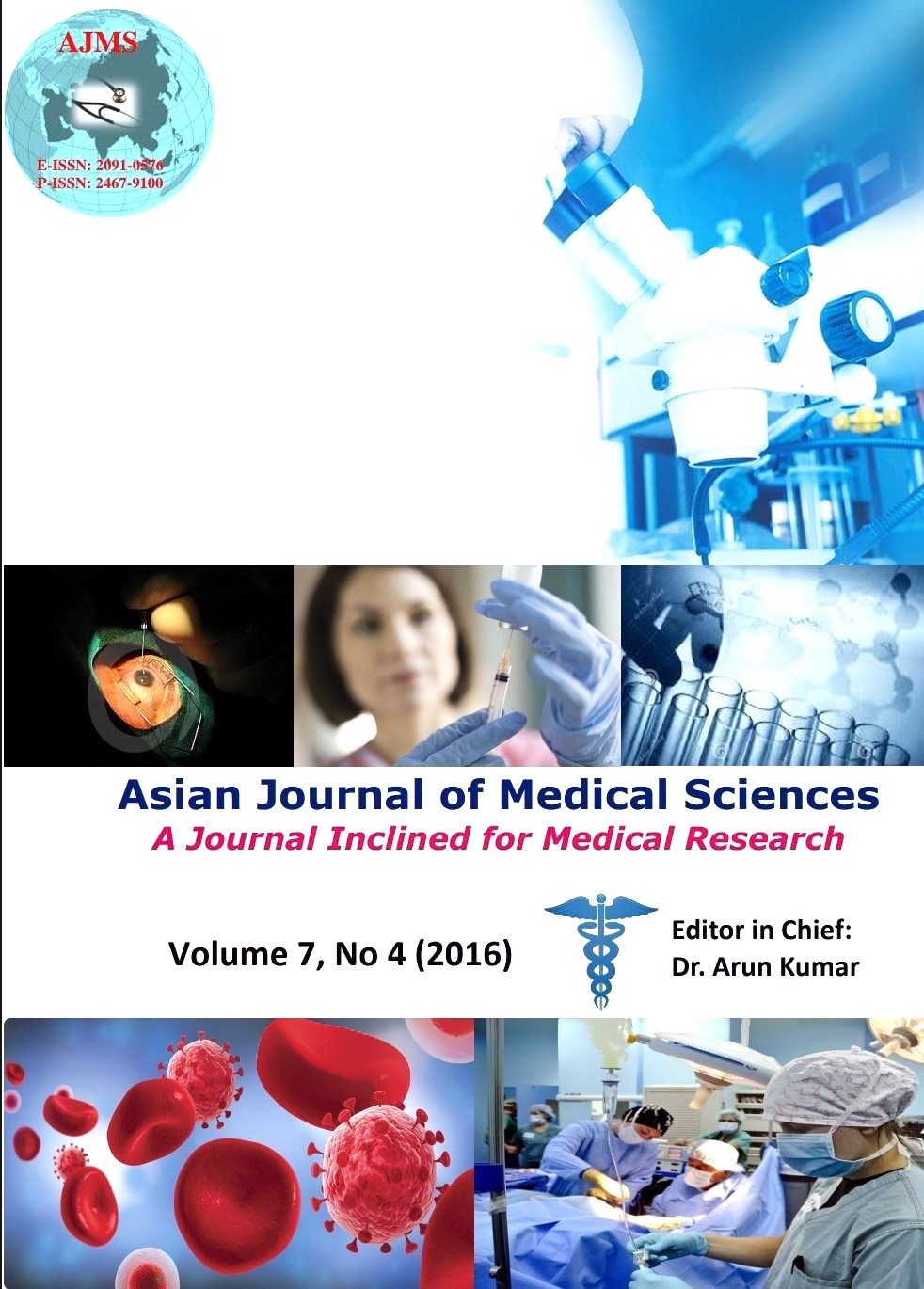Prevalence of self-reported Type 2 diabetes mellitus and associated socio-economic-demographic factors among adults above 20 years in a residential area of Delhi
Keywords:
Prevalence, Diabetes, DelhiAbstract
Background: There is changing epidemiology of type 2 diabetes mellitus in India. Few studies have reported prevalence of self reported diabetes in Delhi.
Aims and Objectives: To assess the prevalence of self–reported Type 2 diabetes mellitus (T2DM) and find out its association with socio-economic-demographic factors among adults above 20 years in a residential area of Delhi.
Materials and Methods: This was a community based cross-sectional study done in a residential area of East Delhi. The subjects were identified by door to door survey based on
available records and self-report. They were interviewed using a pre-tested interview schedule with items on socio-economic and demographic characteristics. Chi-square test was used for qualitative data. Multivariate logistic regression analysis was used to find out associated factors with T2DM. Odds ratio (95% CI) was calculated. ‘p’ < 0.05 considered significant.
Results: The self-reported prevalence of T2DM was 8.5% (461/5444) among 20 years and
above population. It was more in males (9.1%) than females (7.8%), highest (25%) in primary educated, least (7.3%) in graduates and above (p<0.001). Age-specific prevalence was maximum (22.4% in 60-69 years), least (0.2%) in 20-29 years (p<0.001). Occupation wise, maximum (19.2%) was in retired and least (0.7%) in unemployed (p<0.001). The associated factors were: age 50 years and above (OR 6.99, 95% CI 5.4-8.9), males (OR 1.33, 95% CI 1.07-1.65), secondary education (OR 1.39, 95% CI 1.05-1.84), unemployed (OR 1.45, 95% CI 1.15-1.83), per capita per month income Indian Rupees (INR) 20001 and above (OR 1.39, 95% CI 1.10-1.75).
Conclusion: Self-reported prevalence of T2DM was 8.5%, more among males, >50 years, retired, secondary educated and with per capita income per month of Rs 20001 and above. It is necessary to create awareness among the people to identify, manage and prevent T2DM.
Asian Journal of Medical Sciences Vol.7(4) 2016 6-13
Downloads
Downloads
Published
How to Cite
Issue
Section
License
Authors who publish with this journal agree to the following terms:
- The journal holds copyright and publishes the work under a Creative Commons CC-BY-NC license that permits use, distribution and reprduction in any medium, provided the original work is properly cited and is not used for commercial purposes. The journal should be recognised as the original publisher of this work.
- Authors are able to enter into separate, additional contractual arrangements for the non-exclusive distribution of the journal's published version of the work (e.g., post it to an institutional repository or publish it in a book), with an acknowledgement of its initial publication in this journal.
- Authors are permitted and encouraged to post their work online (e.g., in institutional repositories or on their website) prior to and during the submission process, as it can lead to productive exchanges, as well as earlier and greater citation of published work (See The Effect of Open Access).




